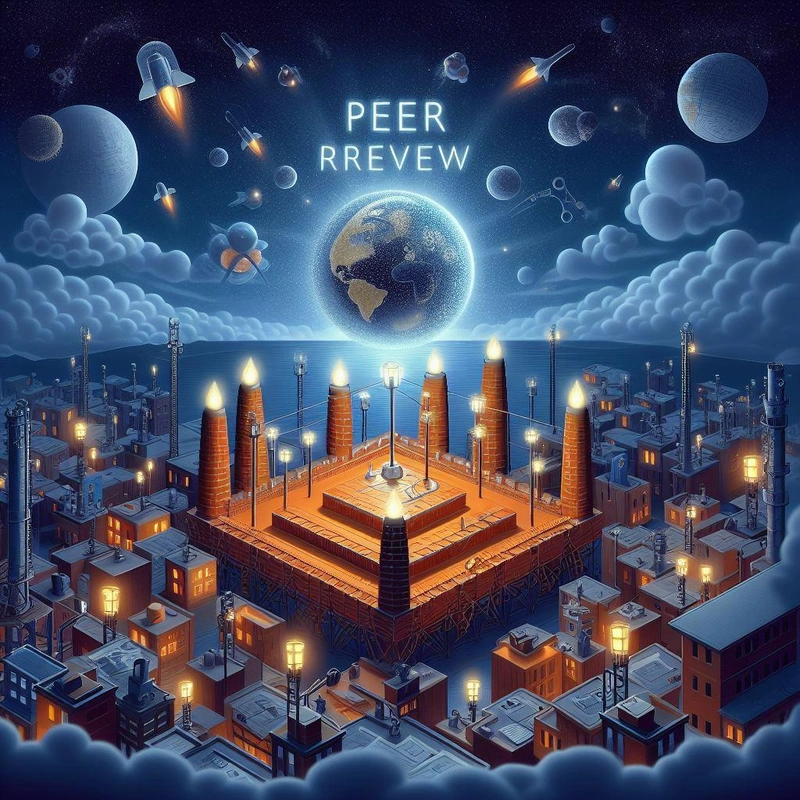Scientific research thrives on a foundation of rigorous scrutiny. Each published discovery represents a meticulous review process, where experts in the field meticulously examine the work, brick by brick. This unique system, known as peer review, is the cornerstone of scientific integrity and credibility. It acts as a backstage pass to the world of science, where unsung heroes – the reviewers – meticulously evaluate research, ensuring its soundness and shaping our collective understanding of the world.
But what does it mean to peer review a paper? How do prestigious journals like Elsevier, Nature Chemistry, Brieflands, Scientific Free Reports Journal, and Neuroscience Journals, among others, select the best research to share with the global scientific community? Enter the captivating and consequential world of peer review, where every detail matters, and every critique could lead to a paradigm shift.
Just as the finest symphonies rely on each instrumentalist's precision and skill, the beauty of a scientific discovery lies in the rigorous scrutiny it undergoes before it can inspire an awe of understanding. This piece is a guided tour through the concert hall of peer review, revealing the harmonious symphony that plays behind the scenes of every scientific breakthrough.
The Orchestra of Peer Review: Who are the Key Players?
Imagine a symphony - the conductor, the musicians, and the audience. In the realm of peer review, the journal editor acts as the conductor, guiding the process with an experienced hand. The researchers are the musicians, their work is the melody that has the potential to captivate the audience - the scientific community and, ultimately, society.
As the conductor, the editor's role is pivotal. They are responsible for the initial review of the manuscript, assessing its relevance, quality, and conformity with the journal's guidelines. If a paper passes this initial stage, the editor then selects appropriate peer reviewers - the first violinists of this orchestra - who are experts in the field related to the manuscript.
These reviewers, typically anonymous, are entrusted with a critical task: to scrutinize the research's methodology, findings, and interpretations. Their role is to ensure that
the research is rigorous, original, and significant. They are the gatekeepers of scientific credibility, their critique designed to uphold the integrity of scientific knowledge.
The Symphony of Scrutiny: The Review Process
The symphony begins when the reviewers receive the manuscript. Their task is to dissect every aspect of the paper, from the research design and methodology to the analysis and interpretation of the results. This process is anything but superficial - it requires a deep dive into the research, with each reviewer bringing their expertise and perspective to bear on the manuscript.
After their thorough review, the peers submit their feedback, including their recommendations to accept, reject, or request revisions for the paper. This feedback is not a mere list of corrections. It's a detailed critique, a constructive conversation designed to highlight the research's strengths and identify any weaknesses that need addressing.
Upon receiving the reviewers' feedback, the editor makes the final decision. If the paper is accepted, it joins the ranks of peer-reviewed research articles, ready to contribute to the broader scientific dialogue. If the paper is rejected, it's not the end of the road. The researchers can use the valuable feedback to improve their work and resubmit either to the same journal or another one. If revisions are requested, the paper enters a new stage of fine-tuning, with the researchers addressing the reviewers' comments and resubmitting the manuscript for another round of review.
The Encore: The Impact of Peer Review
The peer review process might seem like a long and winding road, but it's a journey that ensures every piece of research meets the highest standards of scientific excellence. But what happens after the symphony of scrutiny ends? What's the encore of this performance?
Peer-reviewed articles form the backbone of scientific knowledge. They influence policy decisions, inform medical practices, and fuel further research. The peer review process, therefore, plays a significant role not just in the validation of individual research but in the broader progression of science.
Moreover, peer-reviewed research articles serve as a credible source of information for the public. In a world where misinformation can spread like wildfire, peer-reviewed articles offer a reliable beacon of truth. They provide the and evidence that society needs to make informed decisions about health, the environment, technology, and more.
Peer review is the unsung hero of science, the backstage process that ensures the spotlight only shines on the most credible, high-quality research. It's the rigorous journey that every scientific idea must embark on to transform from a melody into a symphony, ready to captivate the audience and enrich our understanding of the world.
This paper presents a flowchart of the peer review process of manuscripts submitted to academic journals for publication. It also describes the review process as well as the specific responsibilities of authors, editors, and reviewers. A checklist is prepared for reviewers to evaluate research studies more effectively.
